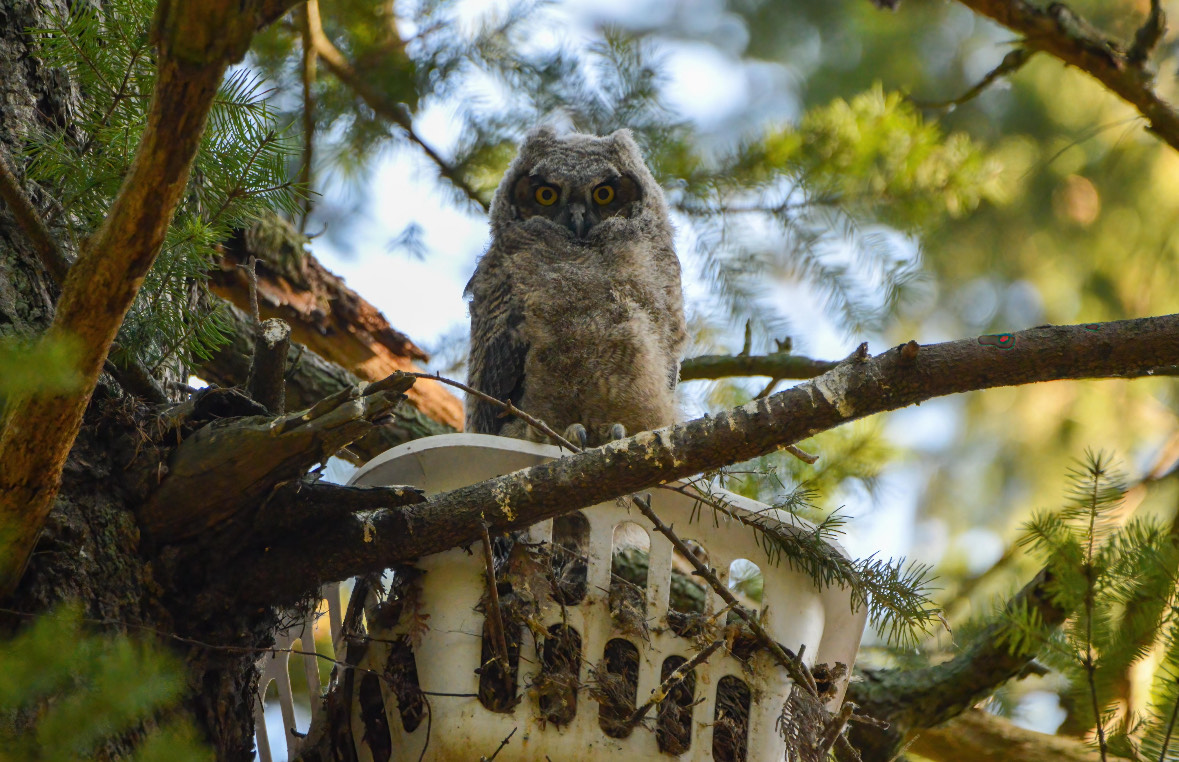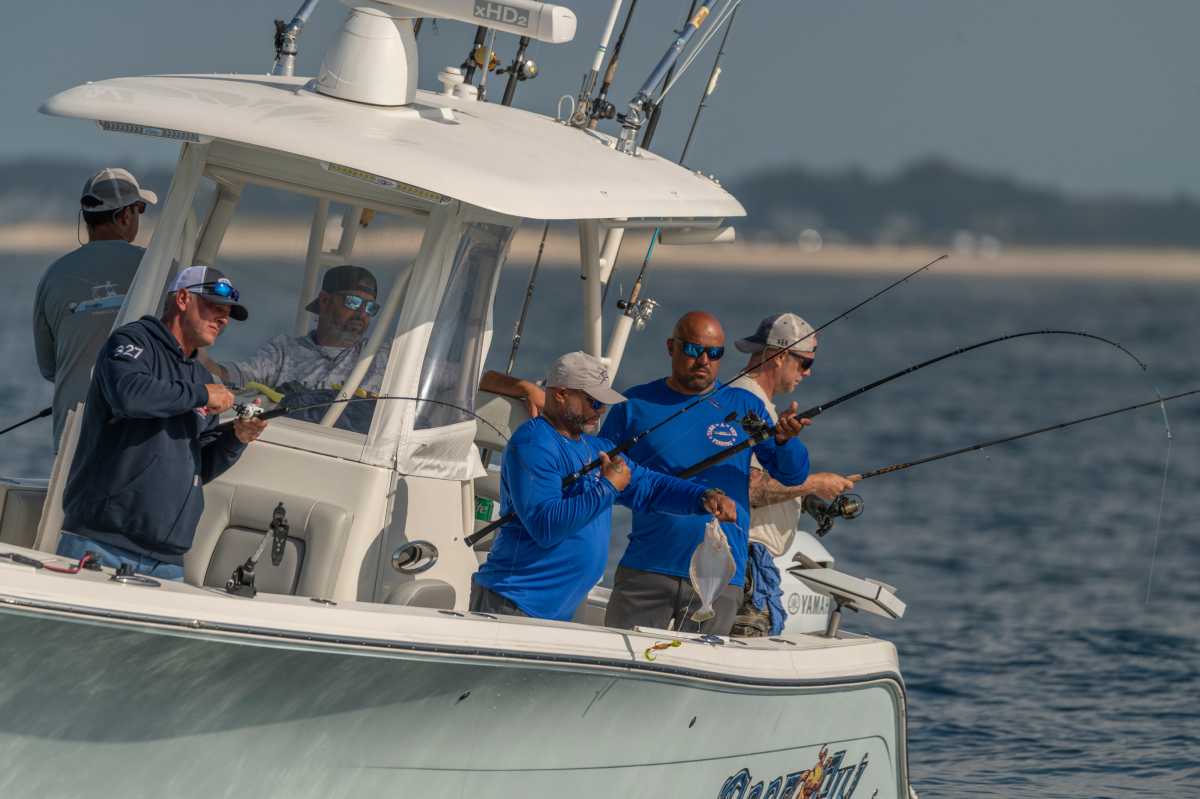Giving Baby Great Horned Owls a Second Chance with Evelyn Alexander Wildlife Rescue

With the arrival of mating season, employees at the Evelyn Alexander Wildlife Rescue Center (EAWRC) have been working tirelessly to ensure that great horned owls– a species critical to Long Island ecosystems– get the best chance at survival. During mating season, these owls don’t build their own nests and instead choose to inhabit abandoned ones, leading to loose and less-than-stable homes. Because of this, across the island, baby great horned owls have a tendency to tumble out of their nest before they are ready to fledge.
“We renest up to a dozen great horned owls a year because they get too big and fall from their nest in the trees,” says Jessica Chiarello, senior animal care technician and hospital supervisor at EAWRC. When a baby owl is found on the ground, EAWRC rescuers first conduct an immediate health assessment, checking for injuries, trauma, or signs of malnourishment. “We make sure there are no wounds, scrapes, or any other health problems, and as soon as we ensure they are healthy and well-fed, we attempt renesting,” Chiarello explains.
“Great horned owls don’t have a branching stage, so they stay in the nest until they are out on the ground,” says Rose Lynch, animal care assistant. “After mom feeds them, they test moving around, and a lot of nests don’t have barriers to hold them in, so they fall out.”
Since great horned owls don’t construct their own nests, the EAWRC uses creative methods to craft “satellite nests” out of milk crates, wine baskets, laundry baskets, plastic bins, or any open box with edges and drainage that can safely cradle young owls.
EAWRC rescuers such as Ryan Gilmartin, animal care assistant at the EAWRC, work tirelessly to ensure the renesting process happens the same day the baby is brought in. This is because “the parents will stay in the area for up to a couple of days, but the longer they’re gone, the greater the risk that they’ll leave for good,” Chiarello continues. “That’s why it’s so important to get them back up and visible as soon as possible.”
For Eastern screech owls, another common Long Island owl, the renesting process differs slightly, as they require tree hollows rather than open nests. However, regardless of species or method, a successful renesting is critical, and EAWRC employees have been working on obtaining more trail camera donations to monitor baby owls’ progress after the re-nesting process is completed.
Nicknamed the “tigers of the owl family,” great horned owls are fierce hunters, capable of taking down prey their own size with a powerful 500-psi grip, and have even been recorded going one on one with bald eagles. “They hunt like crazy,” Lynch adds, “They are also very vocal, especially amongst the raptors, you will hear them when they are distress.”
Unlike many other species, both great horned owl parents play active roles in raising their young. “The dads and moms each do a lot of work because one of the parents, at all times, have to sit on the baby until it is fully feathered and can regulate its own warmth, while the other hunts,” Lynch explains.
One of the most remarkable adaptations of great horned owls is their asymmetrical ear placement. “The feathers on the top of their head aren’t ears,” Lynch continues, “They’re tufts that make them look tough for added effect. Their real ears are on the sides of their head.” With one being higher up and farther along than the other, “these owls can get a full picture of how far their prey is and how long it will take to get there—they triangulate it,” Lynch adds.
During mating season, the EAWRC urges locals to take precautions to protect nesting owls. “Don’t cut down old trees right now– someone might be nesting up top or inside the tree,” Lynch warns. “If you suspect someone might be in a tree, call us and we’ll check it out before you cut it down. Or, otherwise, you have the opportunity to watch a beautiful family grow up. If it’s not an immediate hazard, wait two months and the animals will leave to venture out.”
“Also- we are looking for a ladder to get these nests up in the trees,” says Kathleen Mulcahy, Executive Director of the EAWRC, “so if anyone has any old ones, we are in need!”
The center is located at 228 West Montauk Highway, Hampton Bays. It can be reached at 631-728-4200, and animal emergencies can be reported at 631-728-WILD (9453). The center is open 9 a.m.–5 p.m. seven days weekly. Visit wildliferescuecenter.org for info.









